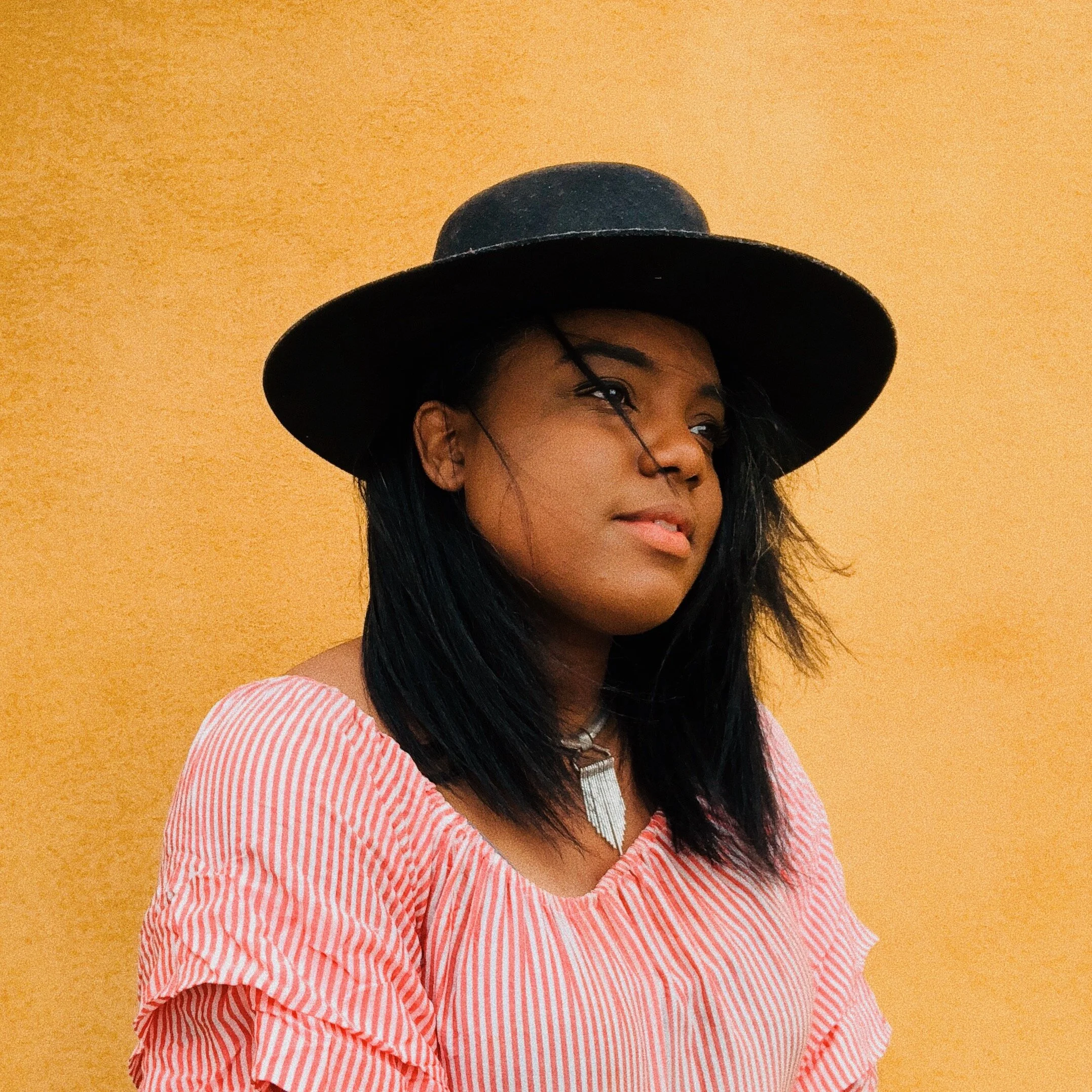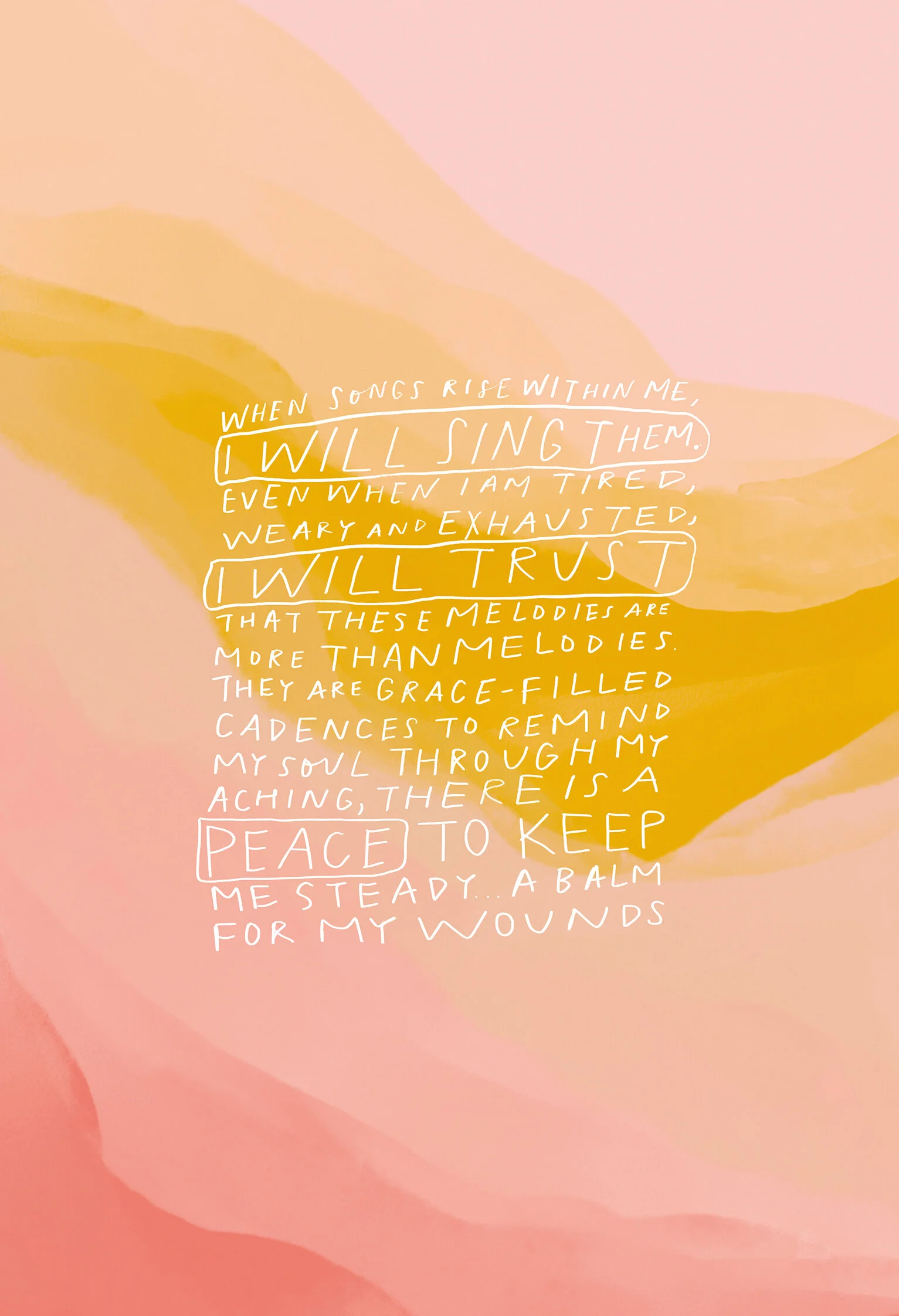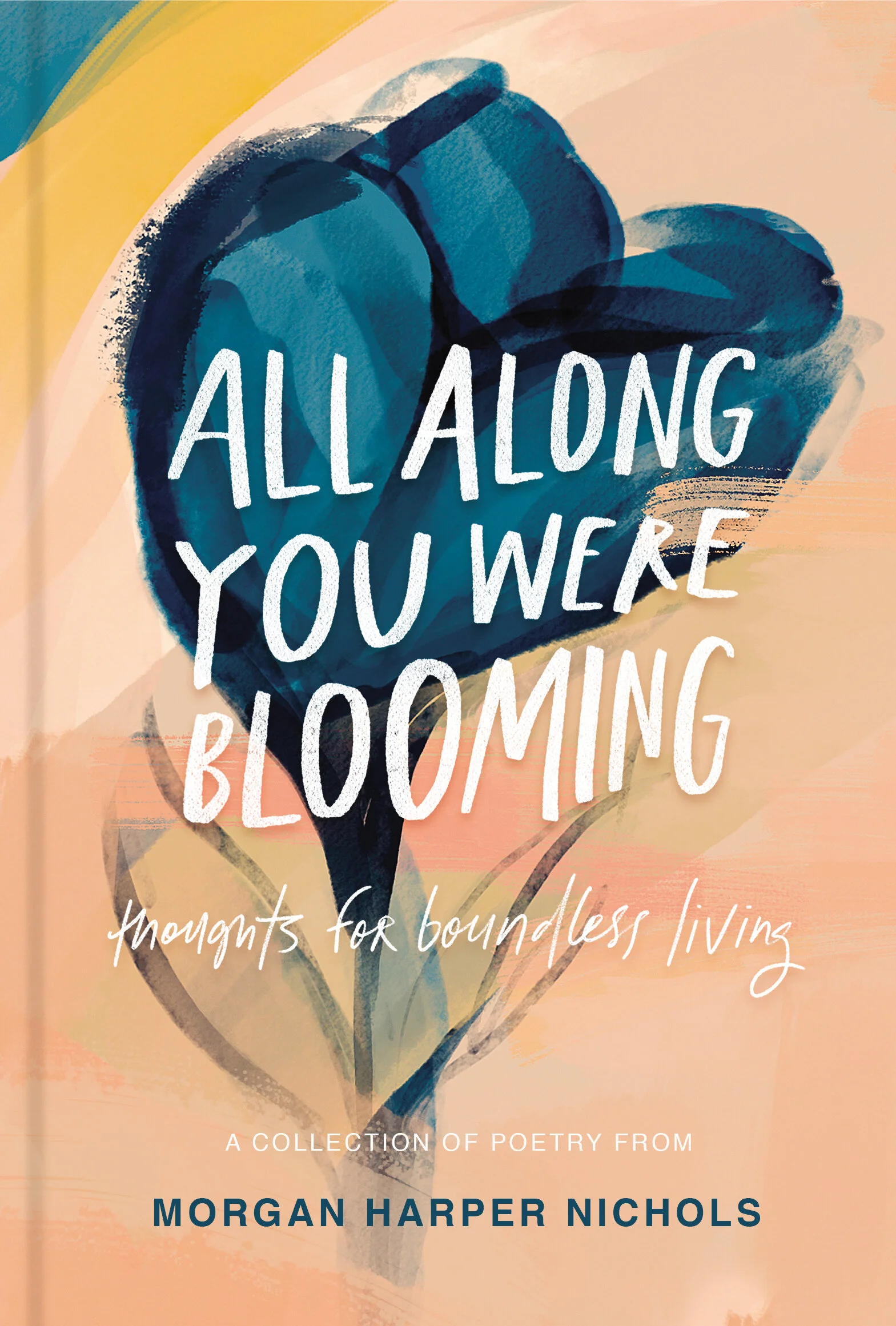Peach Toned Prophecy

Peached Toned Prophecy:
Interview with Morgan Harper Nichols
By Kathryn Watson
Poet and artist Morgan Harper Nichols brought her prophetic imagination to Instagram. Next, it’s hitting bookstores.
Morgan Harper Nichols is still not totally clear on how this all happened. With over a million social media followers and a peach-pastel visual style that has risen to the vanguard of “Instagram poetry,” she finds herself on the cusp of her first major-market release, a book of her original work. In some ways, she knows it started with a vulnerable poem she shared on Instagram at the end of 2016—one that initially lost her a few followers on her personal account. Nichols says she moved on without thinking much of it, only to discover a few months later that the poem (titled by its first line, “When you start to feel / like things should have been better this year”) had been re-posted tens of thousands of times on the sharing platform Pinterest.
The Instagram account that saw a drop in follower count when she first started posting poetry has now racked up 1 million followers, and Nichols is gearing up for the release of her first mass-market release, a book of poems and art called All Along You Were Blooming (Zondervan). It follows just over two years after the success of her self-published 2017 collection, Storyteller.
Now she’s calling me from the West Coast, during a chaotic week that has included moving with her husband and their 5-month-old baby boy. We’re tracing back the throughline that’s led the Grammy-nominated musician to a career as a poet, artist, and published author. Right now, everything feels like it’s all just beginning. But it all started, she recalls, when she felt like she might have reached the end of the road for her creative work.
Nichols is measured on the phone, but never subdued. As our conversation ranges deep and wide over creative life, motherhood, internet fame, and her work with several nonprofit organizations, she is receptive and humble without being self-deprecating. She speaks with the confidence of an artist who realized long ago that all of this is bigger than herself.
Before her stylized free verses became an Instagram sensation, Nichols would barely crack 1,000 likes on posts with her own handwritten song lyrics. (A poetry post now will garner 40,000 likes or more). The photos on her grid back then were those of a singer-songwriter touring the country and making some headway on the CCM charts, but not much cash for her efforts. She wondered if maybe it was time to hang it up and get some sort of “real job”—though she didn’t have much of an inkling of what that would look like for someone like her.
Nichols grew up homeschooled, free to pursue the arts in a wide-ranging way that indulged her natural curiosity. But when it comes to paint and easel, she regards herself as “the messiest artist ever.” Instead, she creates all of her art digitally, using an iPad Pro, an Apple pencil, and apps like Adobe Sketch. And she still sings. Along with her sister, Jamie-Grace Harper, the duo known as HarperStill has a record of lullabies soon to be released.
Nichols’ signature aesthetic of muted, pastel hues, organic textures, floral imagery, and blocks of text in her own handwriting is soothing and sparse, like walking inside a garden meant for contemplation. This style is the ideal complement to the free-verse stylings of her poems—and it happens to look great on tiny screens. In terms of her artistic influences, Nichols says, “Nature. There’s just so much to pay attention to.”
All Along You Were Blooming pairs Nichols’ original artworks with all-new poetry, inspired by her own followers. Nichols can’t remember the story behind the line that became her book title, though she tells me, “I really wish that I could.” One could hardly blame her for having trouble nailing it down—since 2017, she’s been collecting personal stories from those who reach out to her—often of personal turmoil, heartache, and disillusionment. She uses each story to craft a poem that speaks peace and hope into suffering, a modern-day oracle of sorts. Nichols’ is fine-tuned into the spirit of her readers; she can read the spirit of messages that are shared with her and respond with the poetic equivalent of perfect pitch, each poem an echo of the feeling being shared but with some added lilt; a gentle reminder to look up. Nichols calls these collisions of art, benediction, generosity, and belief, “poem letters.” While these letters speak honestly of grief, disappointments, and hardship, they read like blessings.
Nichol’s poems and songs interact with the rich tradition of poetry as prophetic word. Like any prophet, she recognizes that she is a conduit for a truth that is deep, rich, and not hers to keep quiet. She lists Tracy K. Smith and T.S. Eliot as some of her favorite poets to read. The influence of Smith, especially, is apparent in the lilting half-cadence and layers of candid language that Nichols chooses to use again and again
The poems she crafts are given out of intention, but also a compulsion—she is sharing a message as she lives it. Her art has been a work of self-acceptance, she says, and Instagram happened to be the venue where her work became a healing salve to many others on a journey toward the same.
As far as people who might take the term “Instagram poet” to connote something negative, Nichols has accepted that her work isn’t addressing an exclusive set of highbrow literary critics. Her poetry has found an audience in those who are served by it—the millions of people who share her art with each other, over and over again.
Images have many lives on the internet, and Nichols’ poetry project has been bolstered by the megaphone of her artwork. If the medium is the message, in this case, the message, somehow, invents a new way to think about “influence” or “following”. Nichols has managed to create something that transcends her own self-commodification—she’s built a community of people (mostly women) galvanized by the very act of hoping. Her poetry insists that there is value beyond the power dynamic; that the invisible work of holding tight to faith is progress, and that it matters. This flies in the face of a medium whose mission it is to make a person synonymous with the thing it is that they are selling.
This act of subversion is a genius move, whether Nichols planned it out or not. Poetry in the age of a polarized and poisoned national discourse can serve as a protest song, of course. But it can also be the cool water in an environment threatening to go ablaze; a statement about what can and should endure. Nichols’ poetry welcomes readers, and viewers, by being distinctively refreshing in this way.
Though each poem in All Along You Were Blooming was initially crafted for an audience of one, they find a deeper resonance as they are read far and wide—carrying with them a “philosophy of grace” that comforts, heals, and transports. Instagram, Nichols admits, is just another platform, and a fickle one, at that. When the Instagram influencer boom comes to an end, she’ll find what’s next—and she says she’s already looking forward to it.
Kathryn Watson
Freelance Writer

